Sounds great. The Jamos also are really great speakers.Here is my 4P1L pse amp and TDA1541A nos i2s dac performing.
I like the mids and highs of the interstage, but the (fuller) bass sounds a little soft.My 4P1L PSE amplifier performing with capacitor coupling and interstage transformer coupling.
Which one is better sounding?
Thank youSounds great. The Jamos also are really great speakers.
Thank you for your comment.I like the mids and highs of the interstage, but the (fuller) bass sounds a little soft.
This was for the quick testing only. Actually I inserted the interstages but did not change anything in the existing circuit and 6N1P-E driver.
I am planning to build a new pse amp in a bigger box with interstages and 6S45P (Analog of WE437) driver tubes. This small tube has very high mutual conductance 45mA/V and hi gain:45. Very linear and powerful (8W plate dissipation) too. In my opinion this revision will increase the sound quality.
Jamos are good sounding for $1000 speaker but it’s sensitivity is not high. I connected my 2*3,5W amp to Tannoy 94db and listened. Sound was more dynamic, open, silky and very loud. Difference was like the night and day 🙂
Sure, the Jamos have "only" 90dB/W/m. But on my EL84PP they play pretty loud and very nicely.
Oh, I certainly posted it already 😏... My U-300B, but with more details this time 😉 :
2000-2010 = ten years during it was tested satisfactorily as a prototype :
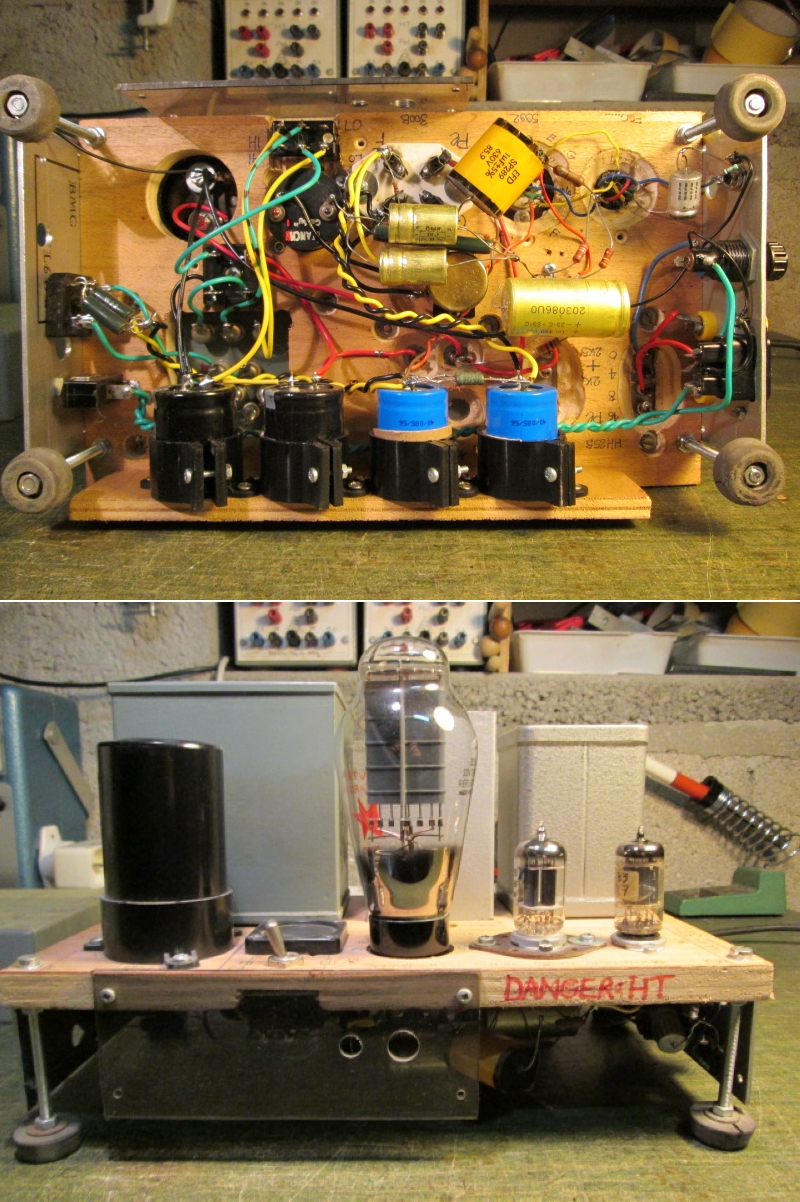
Then in 2010, I ended to build the pair od mono blocks definitively :
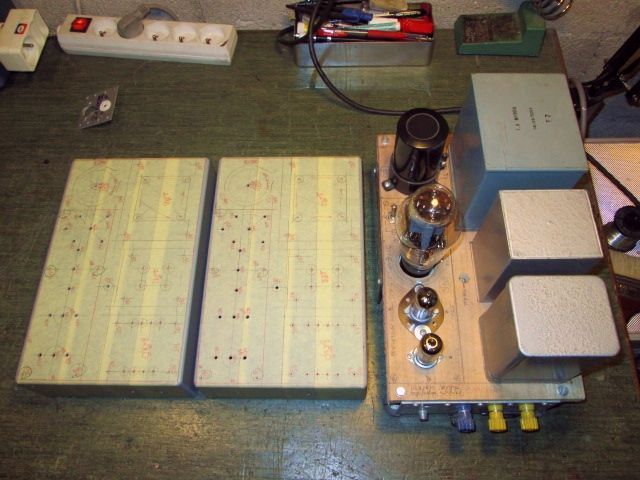
Using Hammond 1550J die-cast aluminium enclosures as chassis :
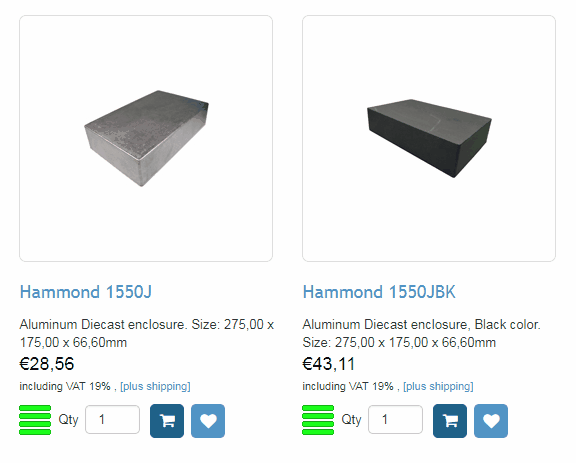
Drawing then drilling : drill press, jigsaw & GreenLee
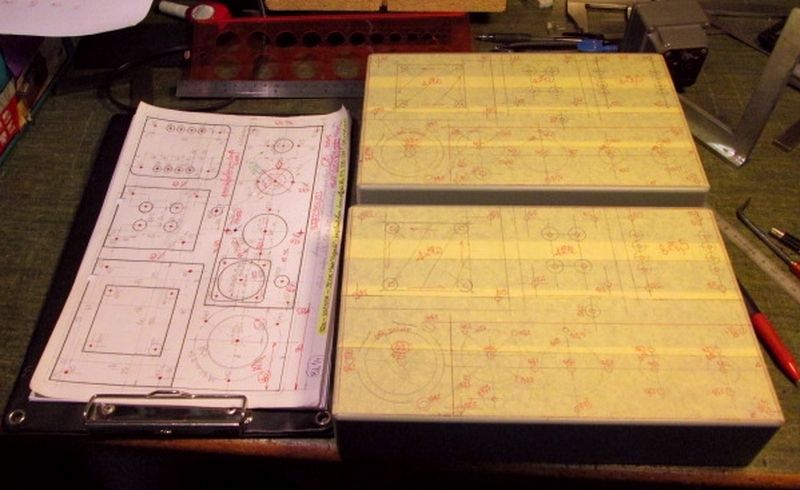
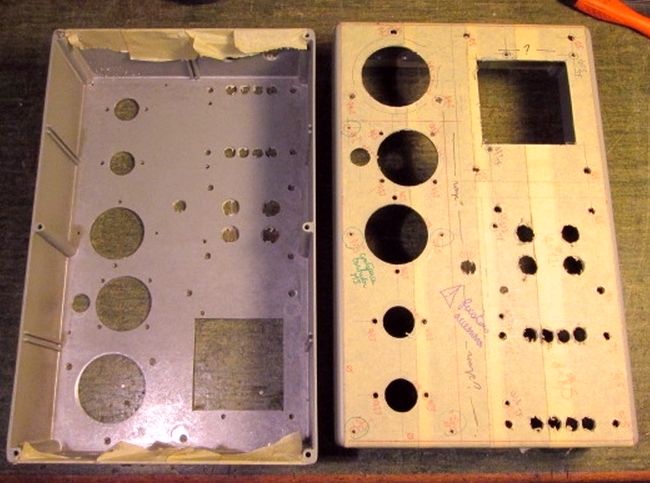
Assembly :
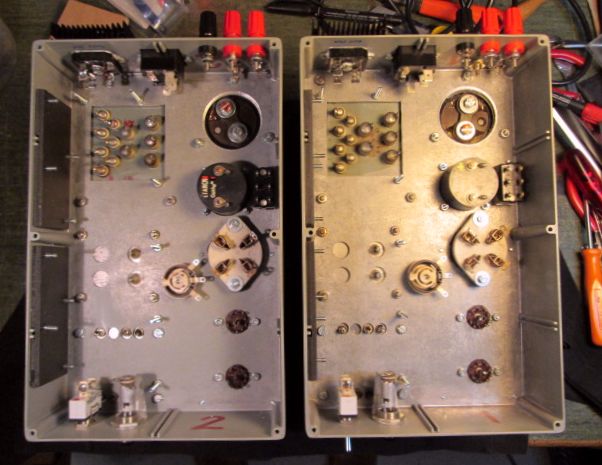
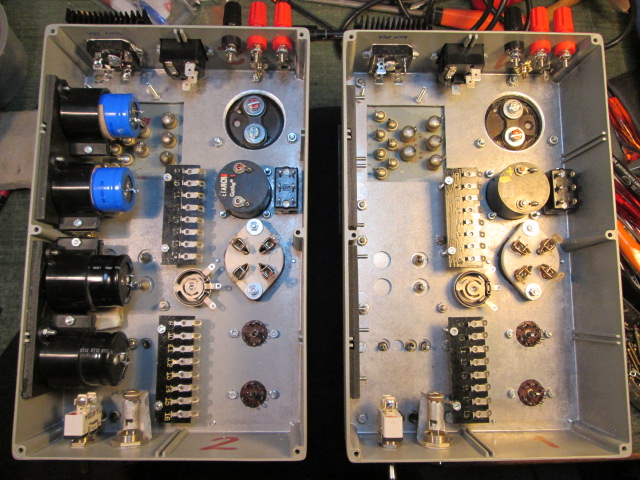
Wiring & Layout :
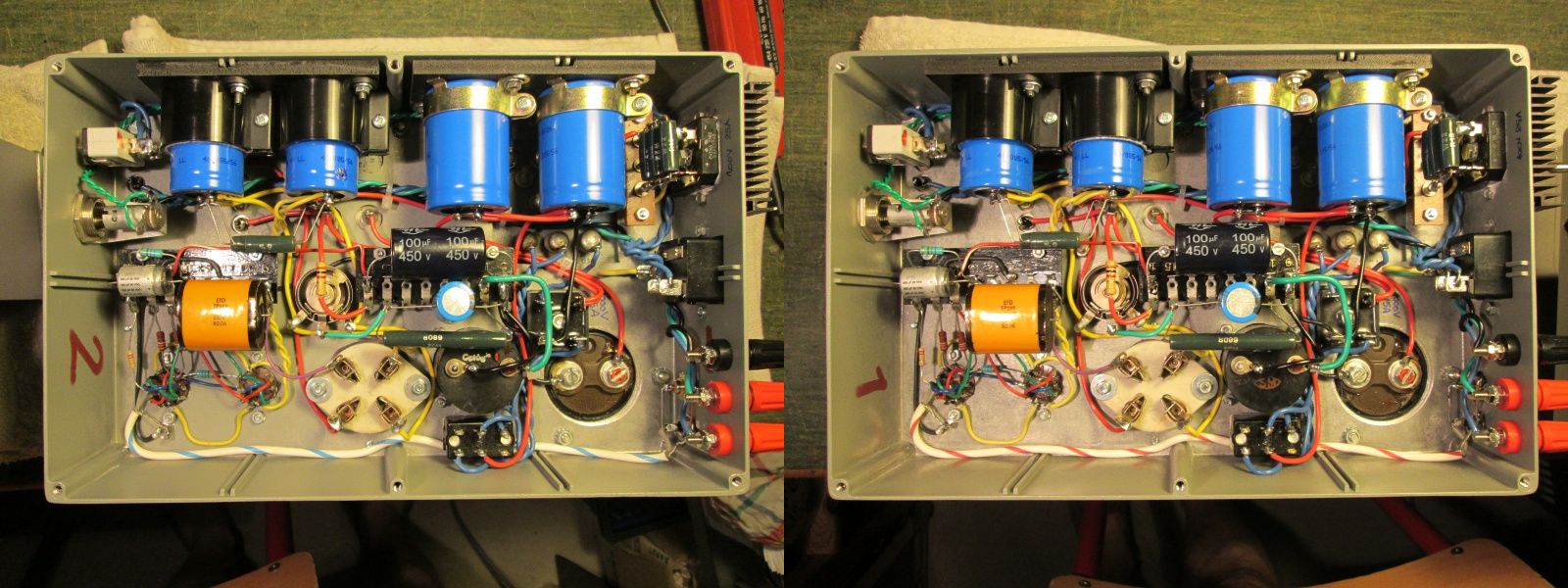

Finished :

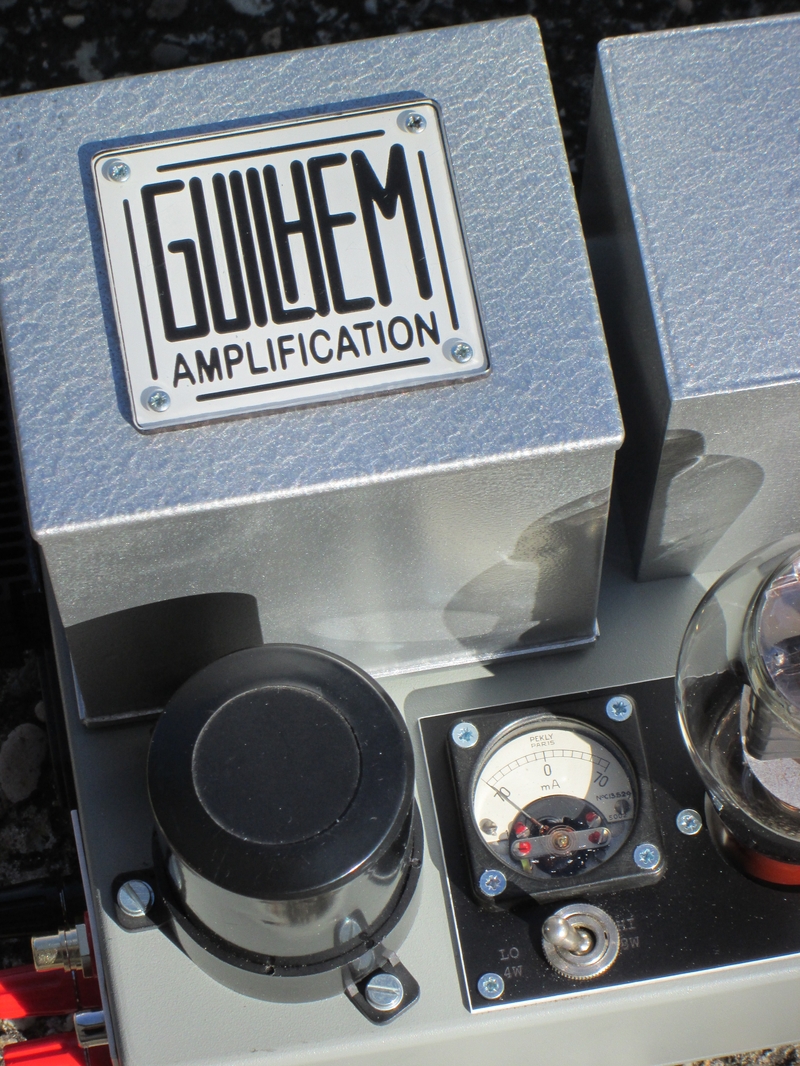
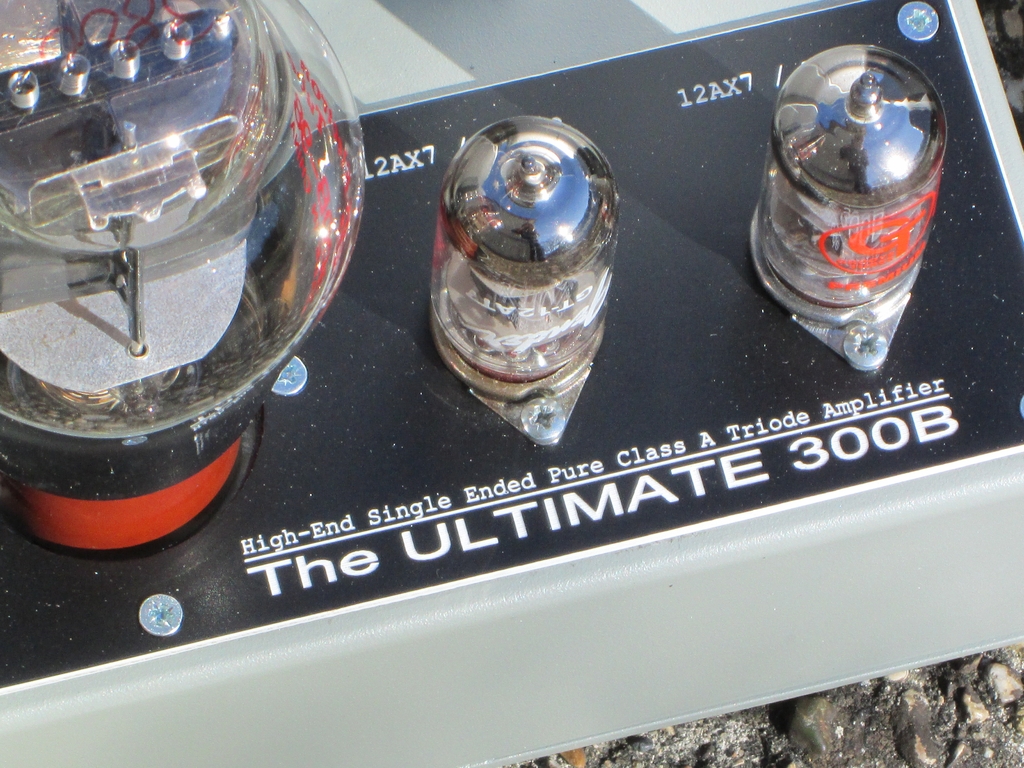

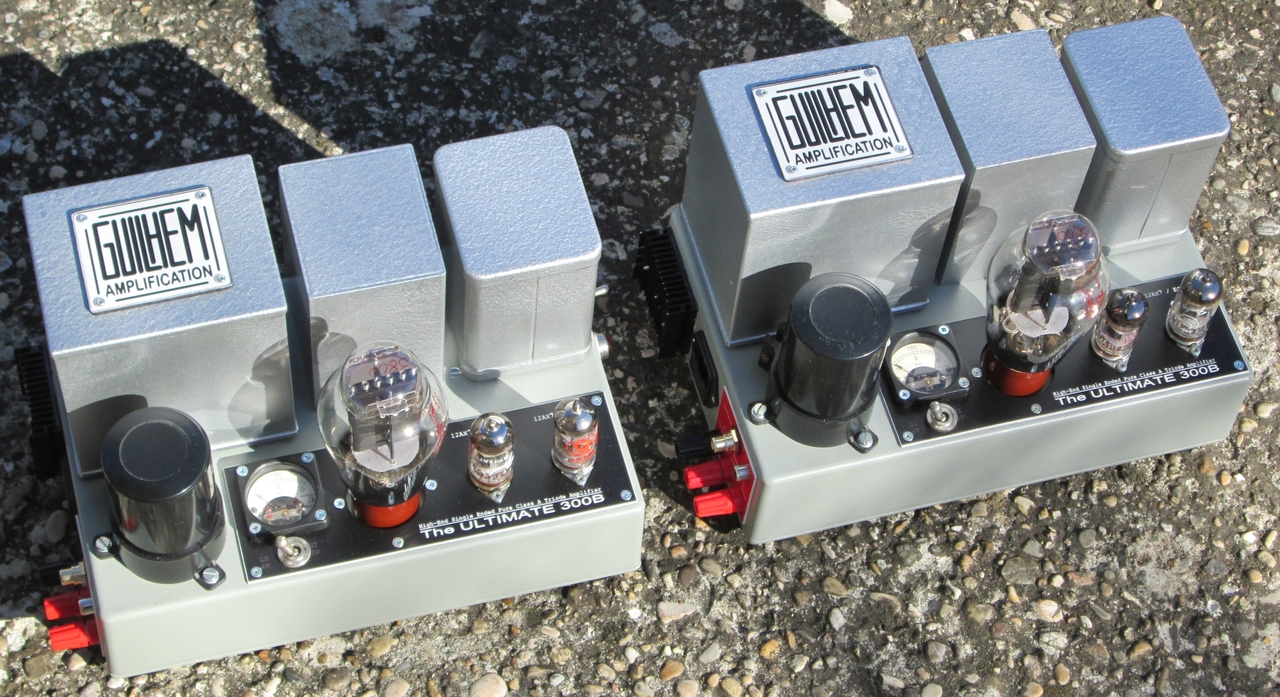
Still operational today, flawlessly... 😎
T
2000-2010 = ten years during it was tested satisfactorily as a prototype :

Then in 2010, I ended to build the pair od mono blocks definitively :

Using Hammond 1550J die-cast aluminium enclosures as chassis :

Drawing then drilling : drill press, jigsaw & GreenLee


Assembly :


Wiring & Layout :


Finished :





Still operational today, flawlessly... 😎
T
Beautifully build! The one thing I would have done is to build them to mirror each other, but they are fine as they are, of course. How do they sound, as ultimate 300B amp?Still operational today, flawlessly...
Someone else's DIY effort that I cleaned up and made work. Wired as a Williamson it actually sounds really good.
(Original builder is long dead, I bought them from an old hifi shop which is long since closed)




They make an honest 35 watts and sound pretty darn good doing so.
Could use some attention on the input, or perhaps more feedback.
An amp like this could be tweaked on indefinitely or just enjoyed.
I chose to enjoy it.
(Original builder is long dead, I bought them from an old hifi shop which is long since closed)
They make an honest 35 watts and sound pretty darn good doing so.
Could use some attention on the input, or perhaps more feedback.
An amp like this could be tweaked on indefinitely or just enjoyed.
I chose to enjoy it.
Beautifully build! The one thing I would have done is to build them to mirror each other, but they are fine as they are, of course. How do they sound, as ultimate 300B amp?
Thanks @Horneydude !
Well, it's more complicated to build in mirror the two blocks when the target is compactness : the connections, the posts and pinouts, the wiring layouts are different in each amp, and this may be an issue when the space is counted.
And I will be honest : it's also easier, as you do it "one time and duplicate"... 😏 😉
I called them "Ultimate 300B" because... I lagged 10 years before building them, nothing else ! Or rather because of their compactness, but not for their performance - which is correct and as expected (below), but the output transformer, while good, is not an "ultimate" one...
I'd say that my U-300B have the sound of a good 300B, but nothing exceptional, or "Ultimate", due to the output transformer.
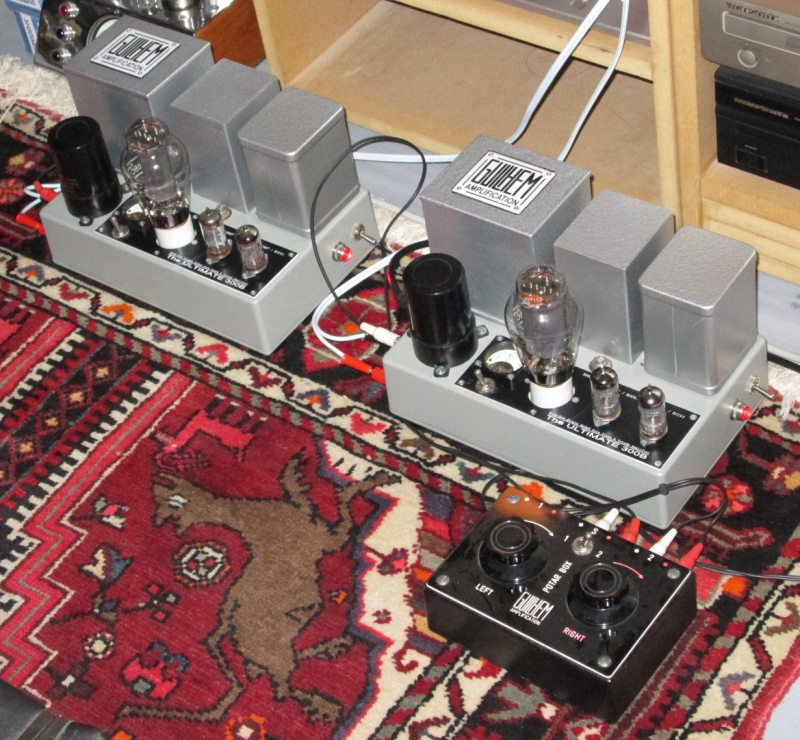
T
@ tubelectron:
really a good job! How did you manage to get such a nice looking square hole in the chassis?
really a good job! How did you manage to get such a nice looking square hole in the chassis?
@ tubelectron:
really a good job! How did you manage to get such a nice looking square hole in the chassis?
Thanks @JoeAlders ! 🙂
For those square holes, I simply use my METABO JigSaw, with a fine toothed blade for steel, and I go slowly : nothing very special, in fact...
T
Similar construction technique for my U-OTL in 2022, but more modular due to density - and still with the same compactness target in mind...
Sorry @Horneydude : still no mirror construction ! 😏
First, the prototype - which represents the possible final layout of the pre and power amp section :
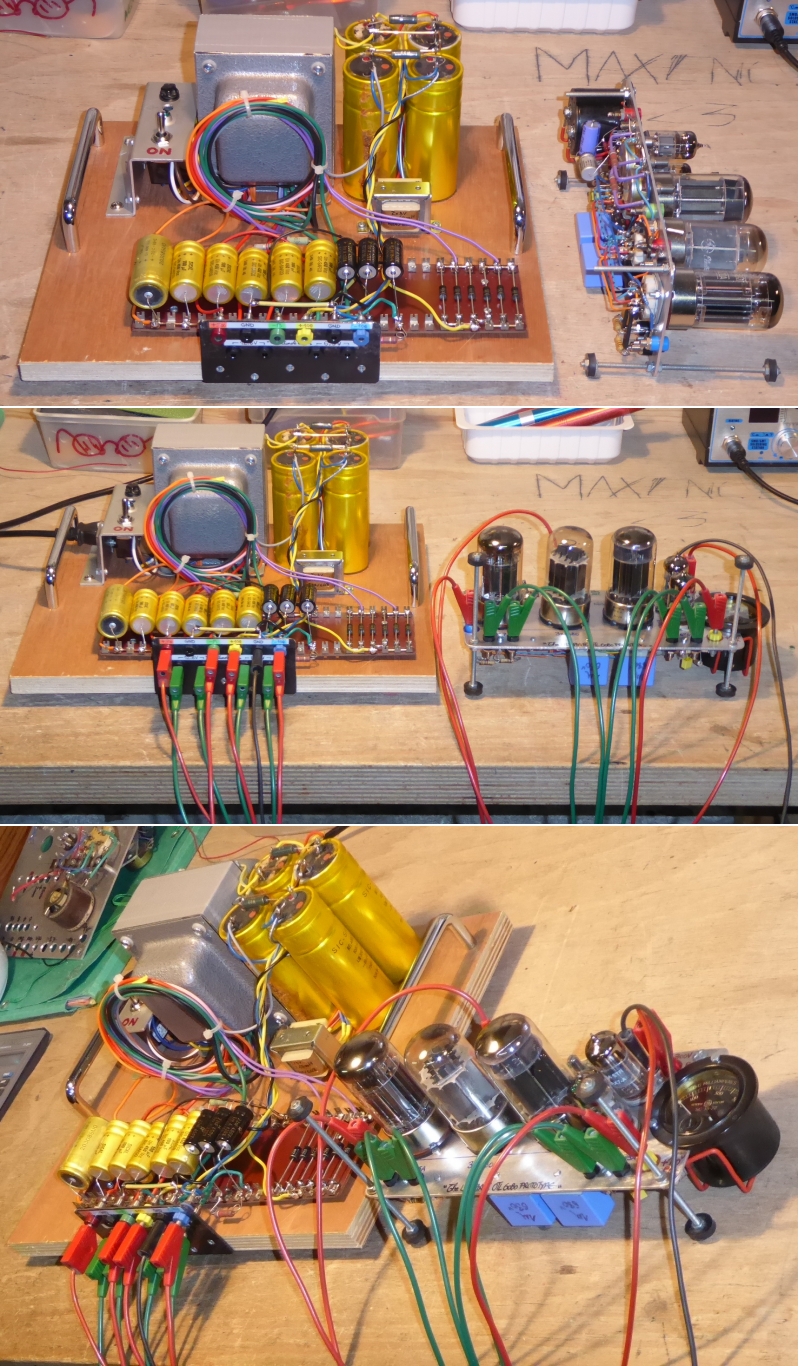
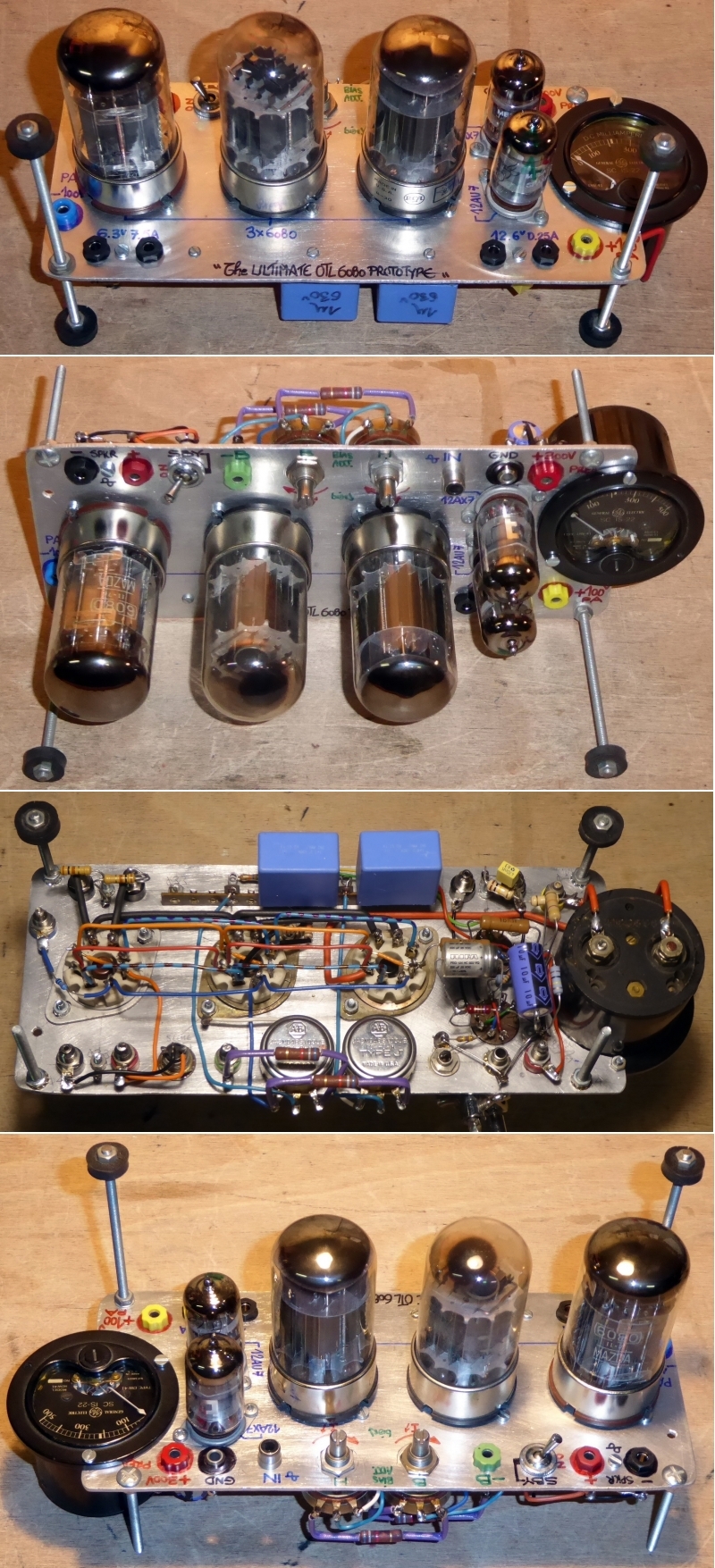
In parallel, study of the layout :
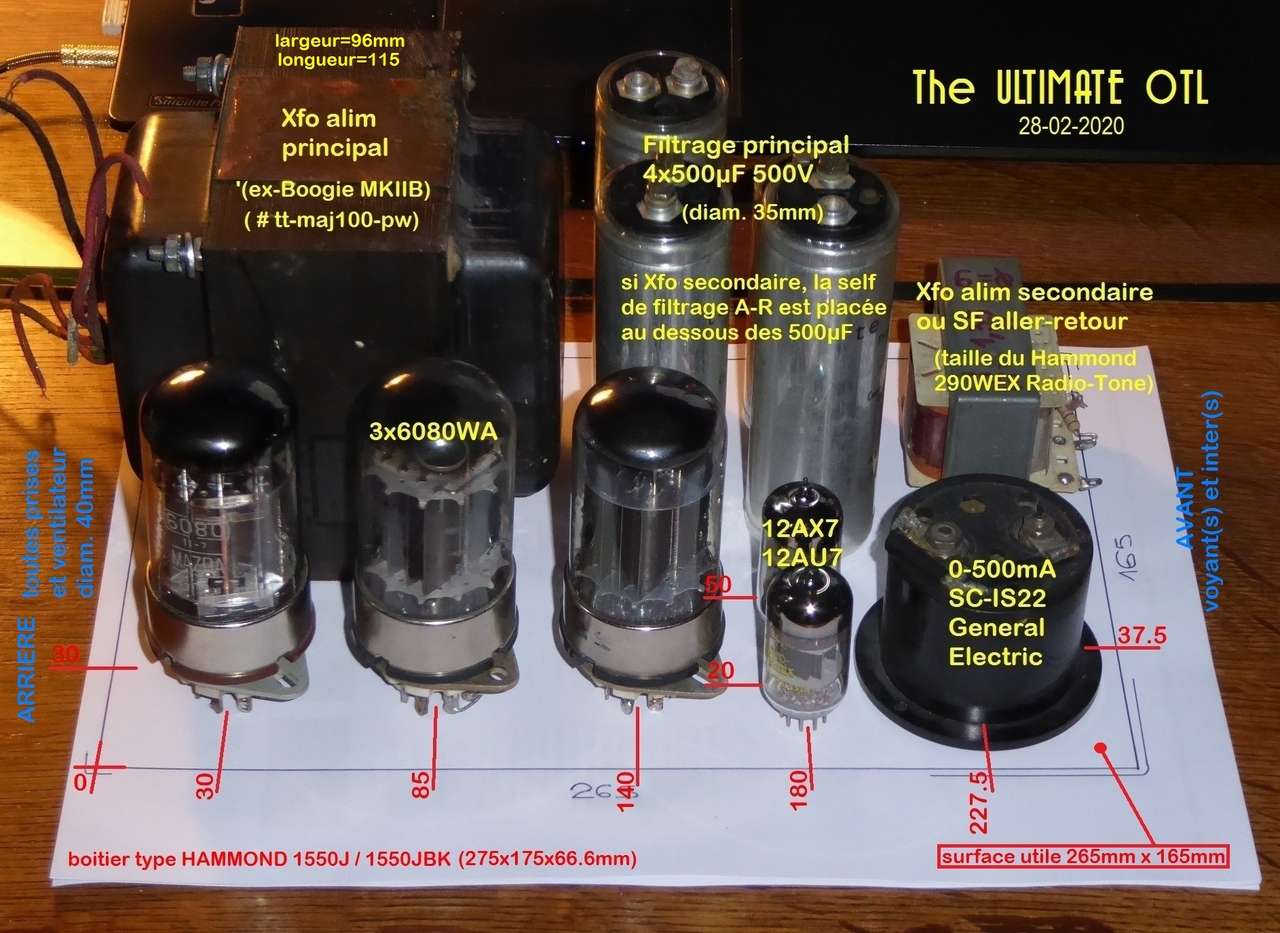
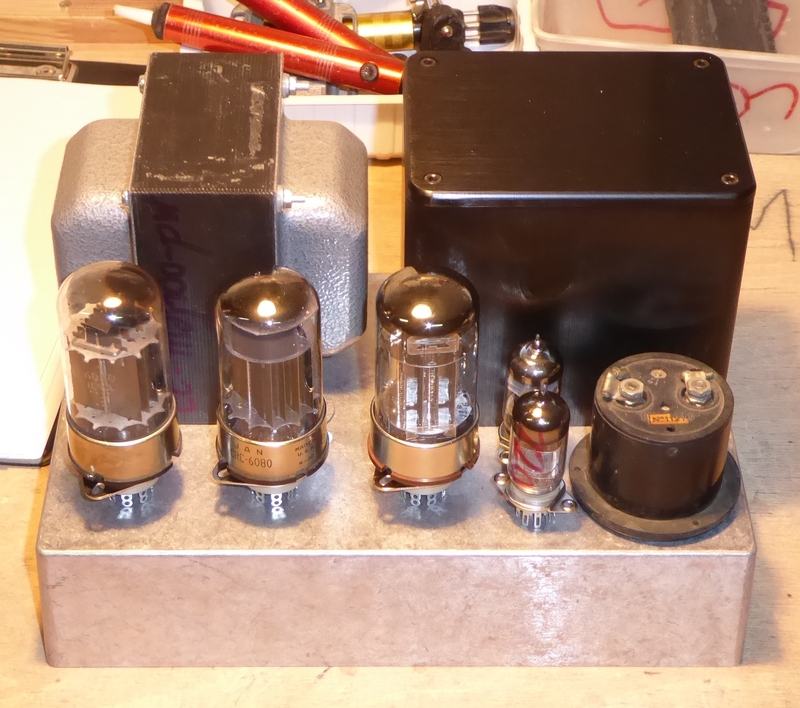
Engine turning of the chassis top :
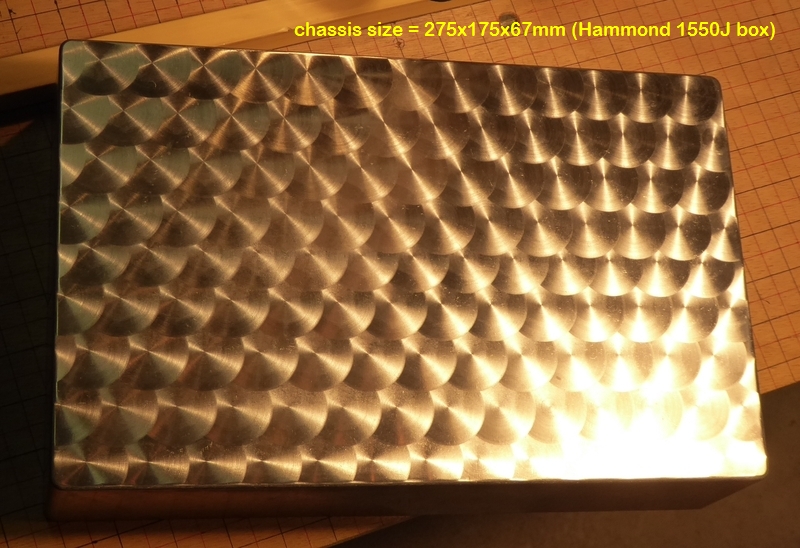
Tracing, drill press and the like :
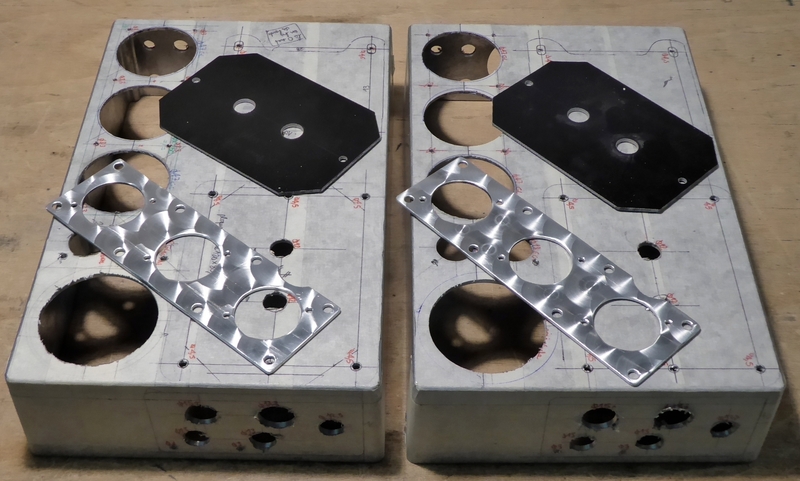
Designing and engraving the plates :

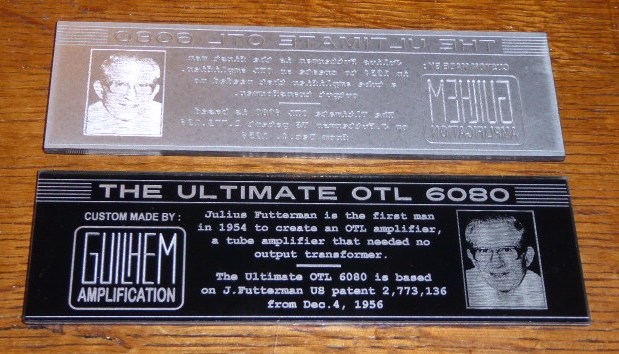
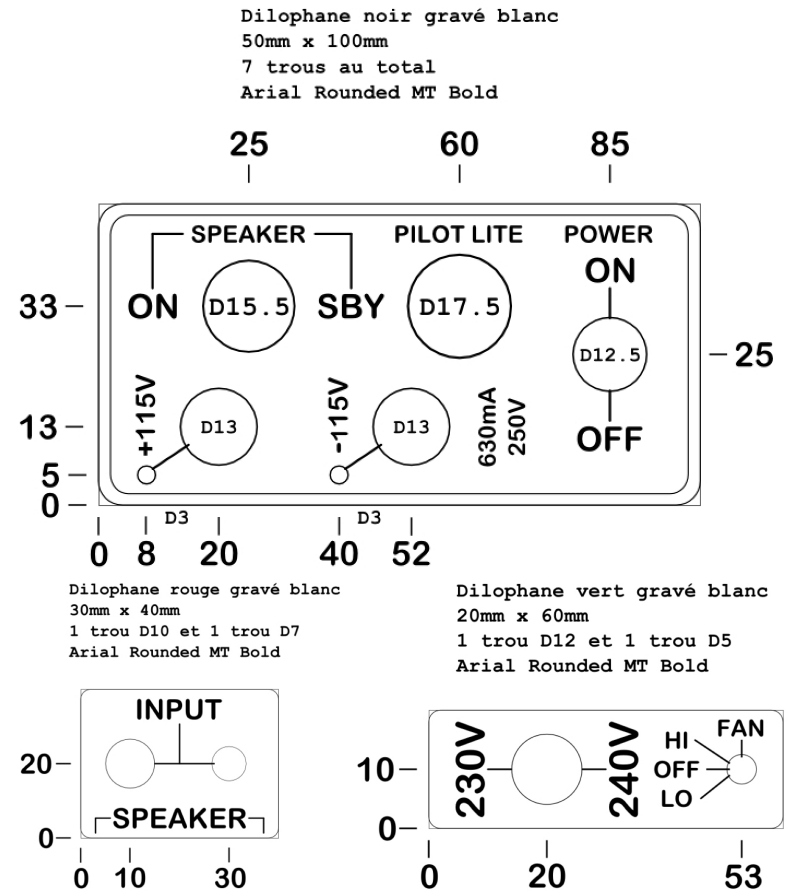
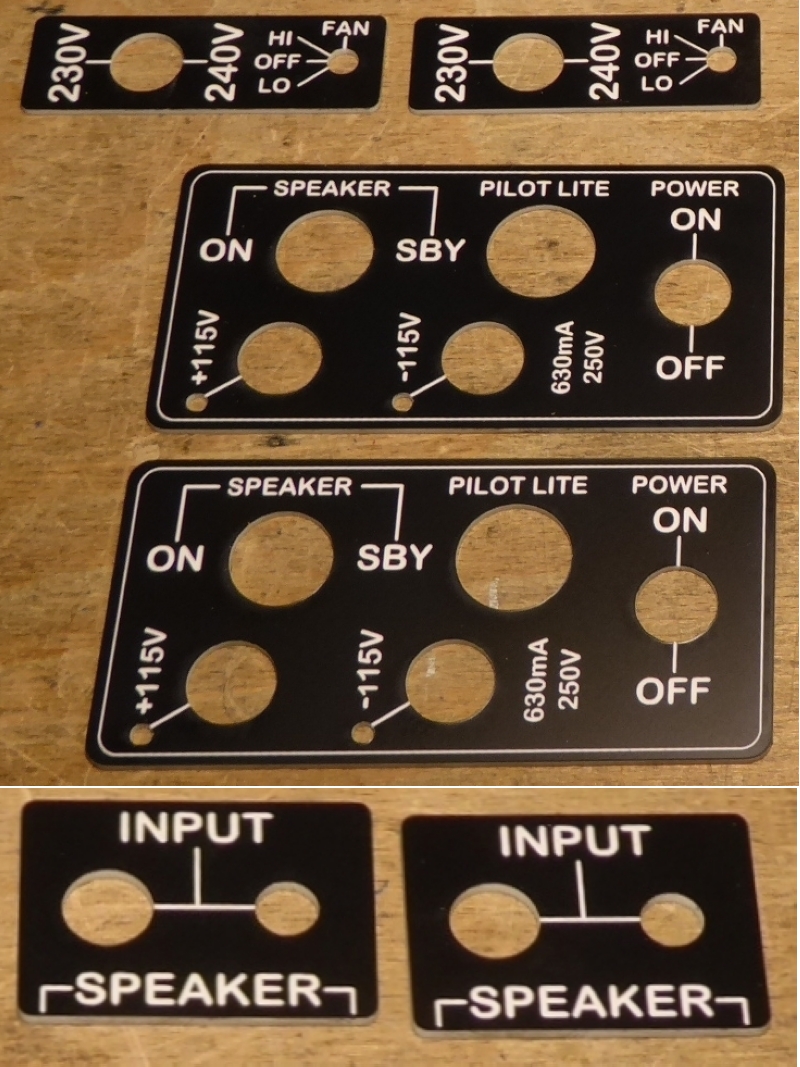
Pre-assembly check :
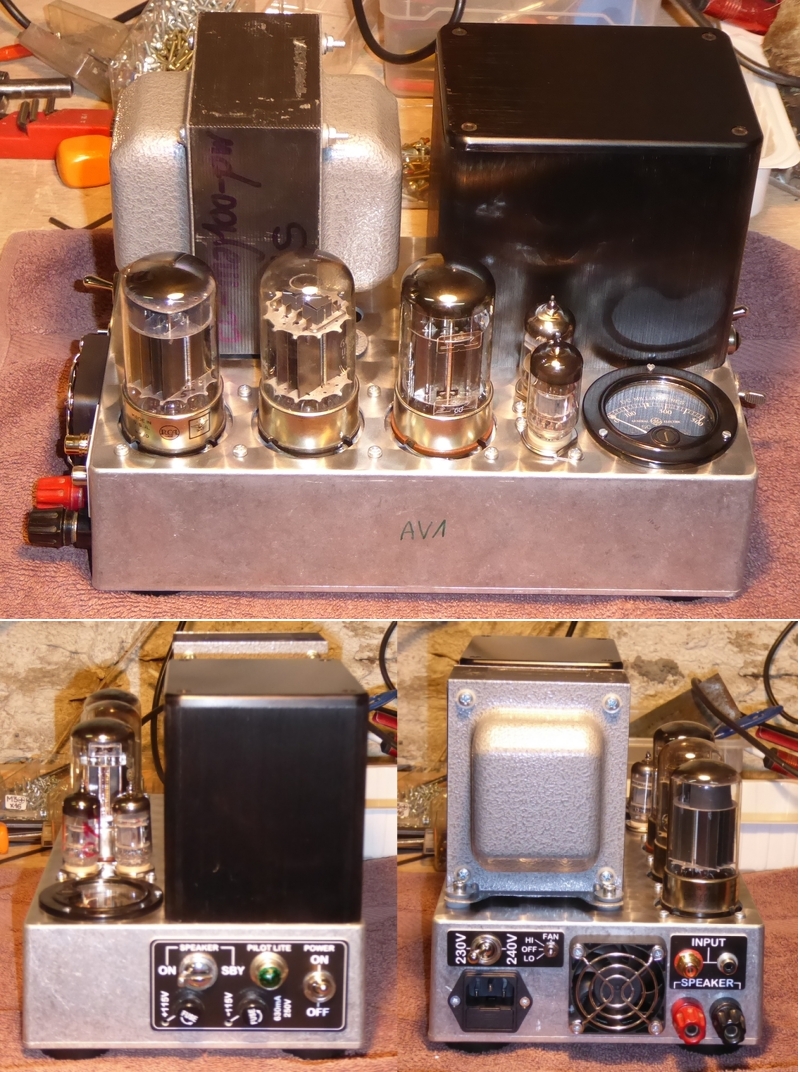
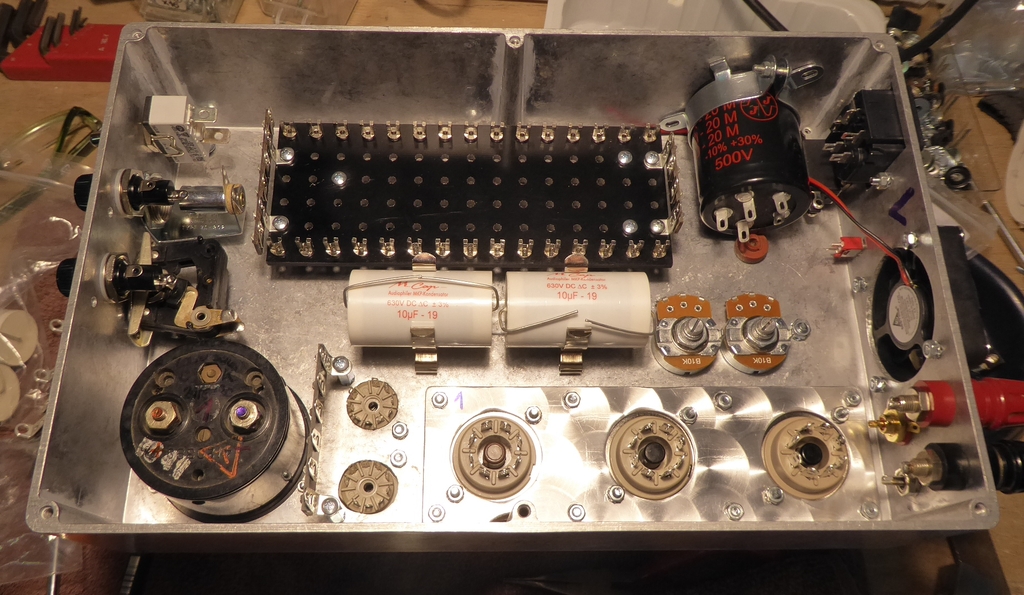
Wiring the modules :
Power supplies :
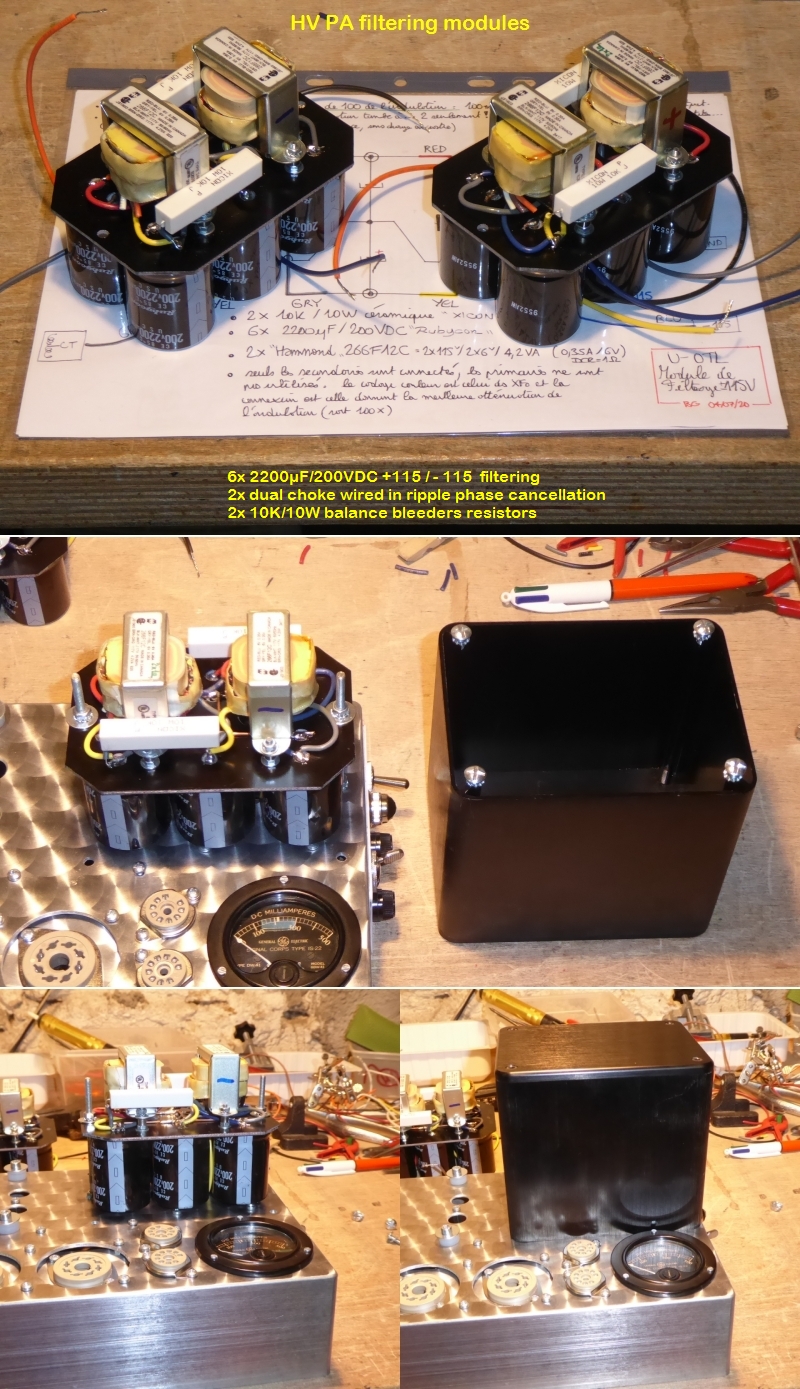
Bias boards :
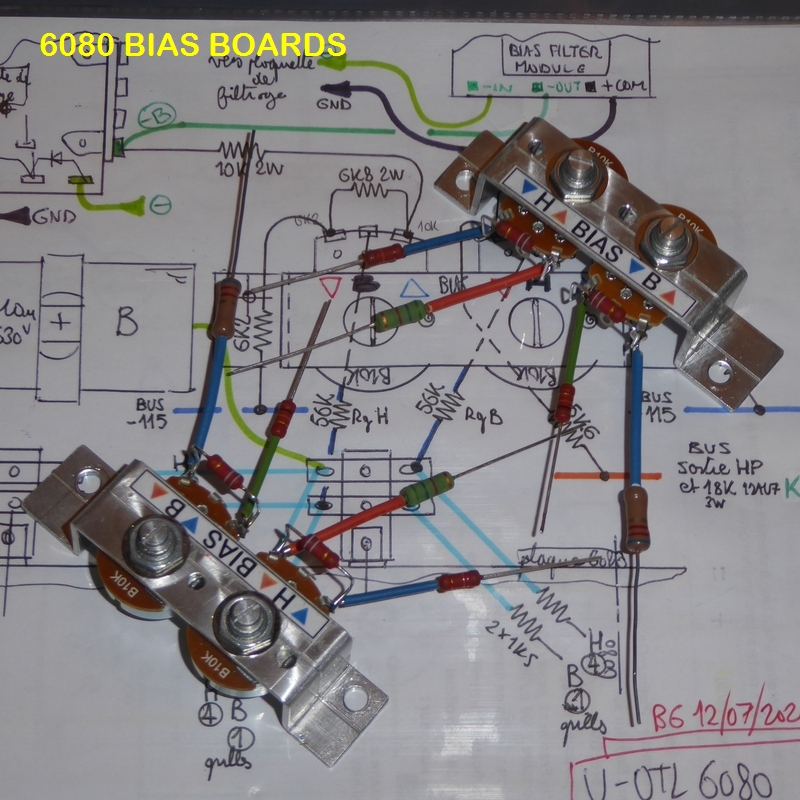
Power amp boards :
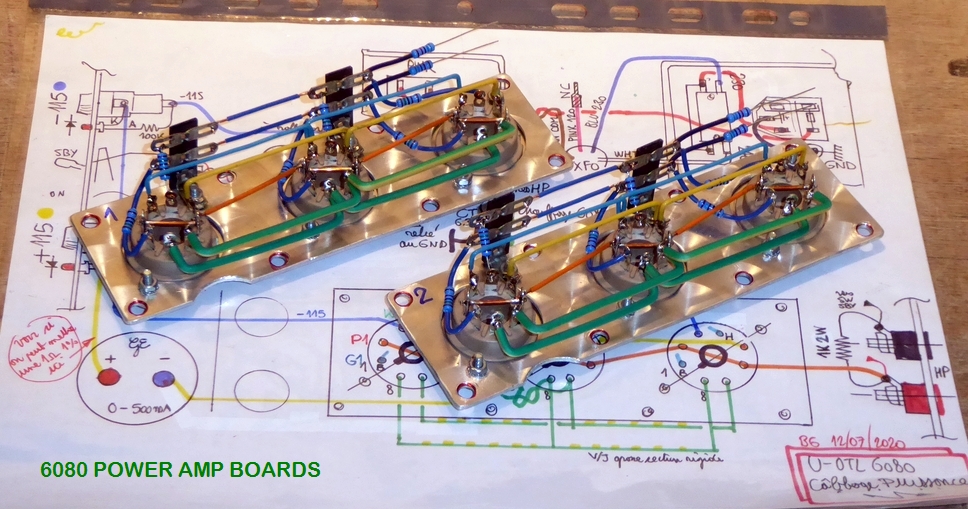
Preamp supplies :
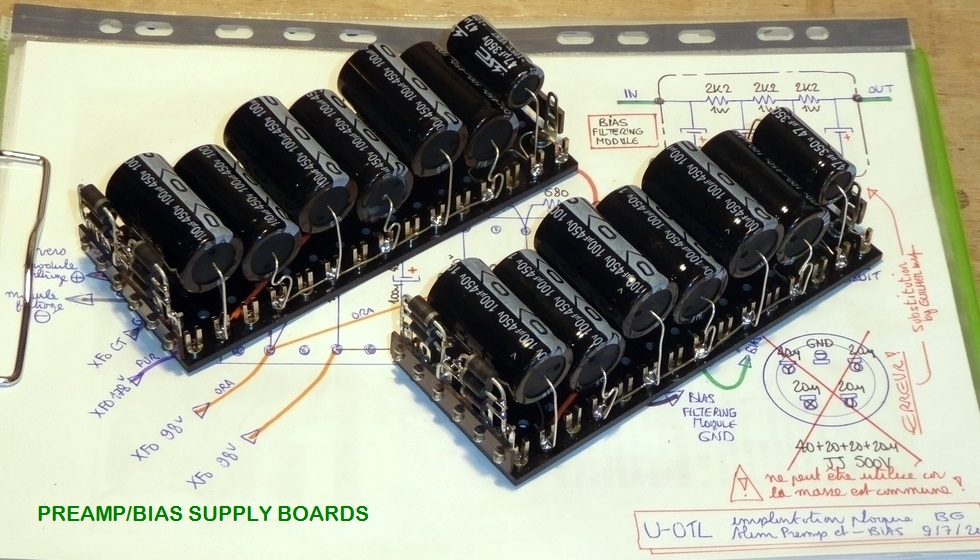
Bias supplies :
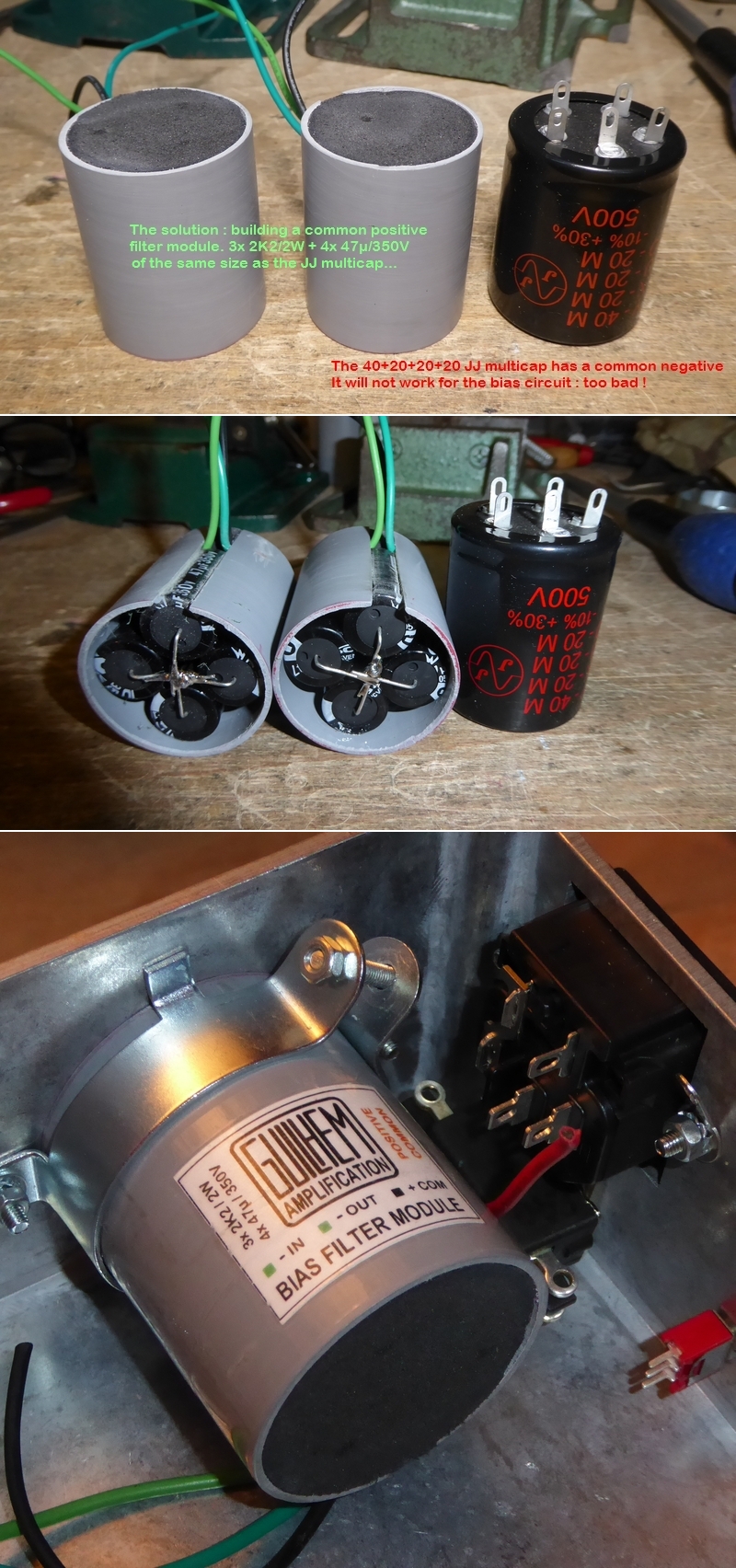
Preamp section :
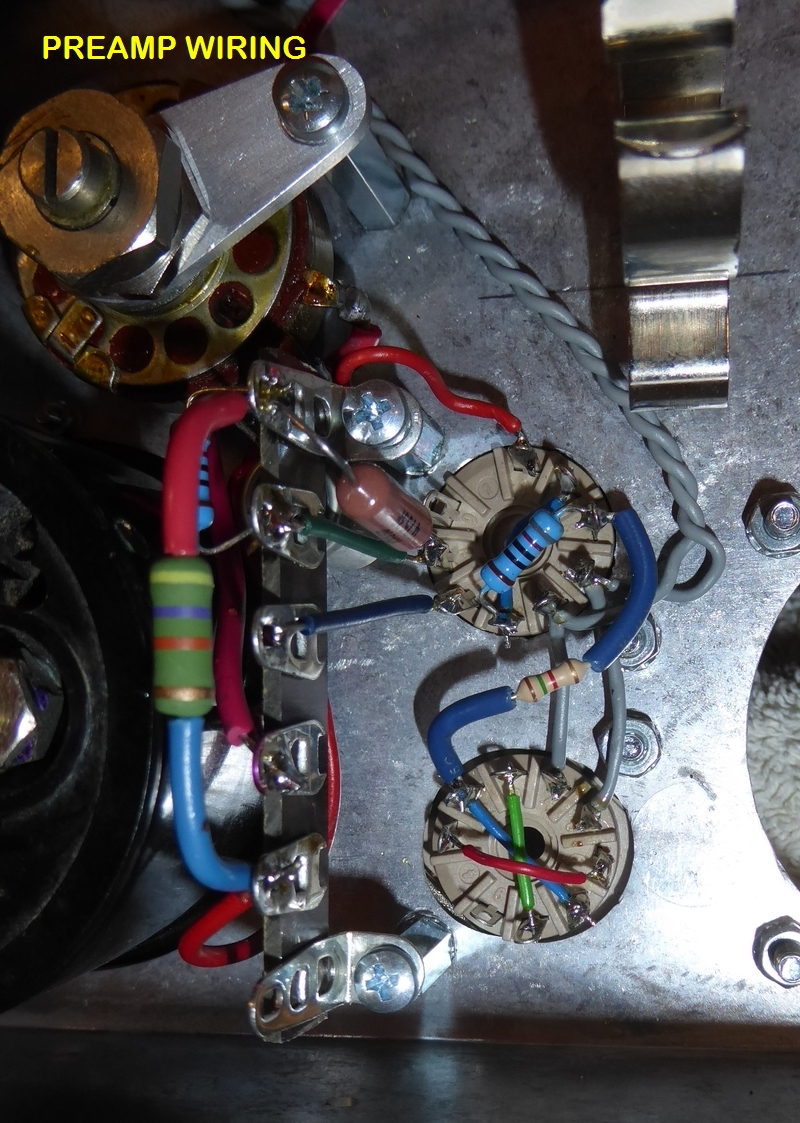
Fan and Leds supplies :
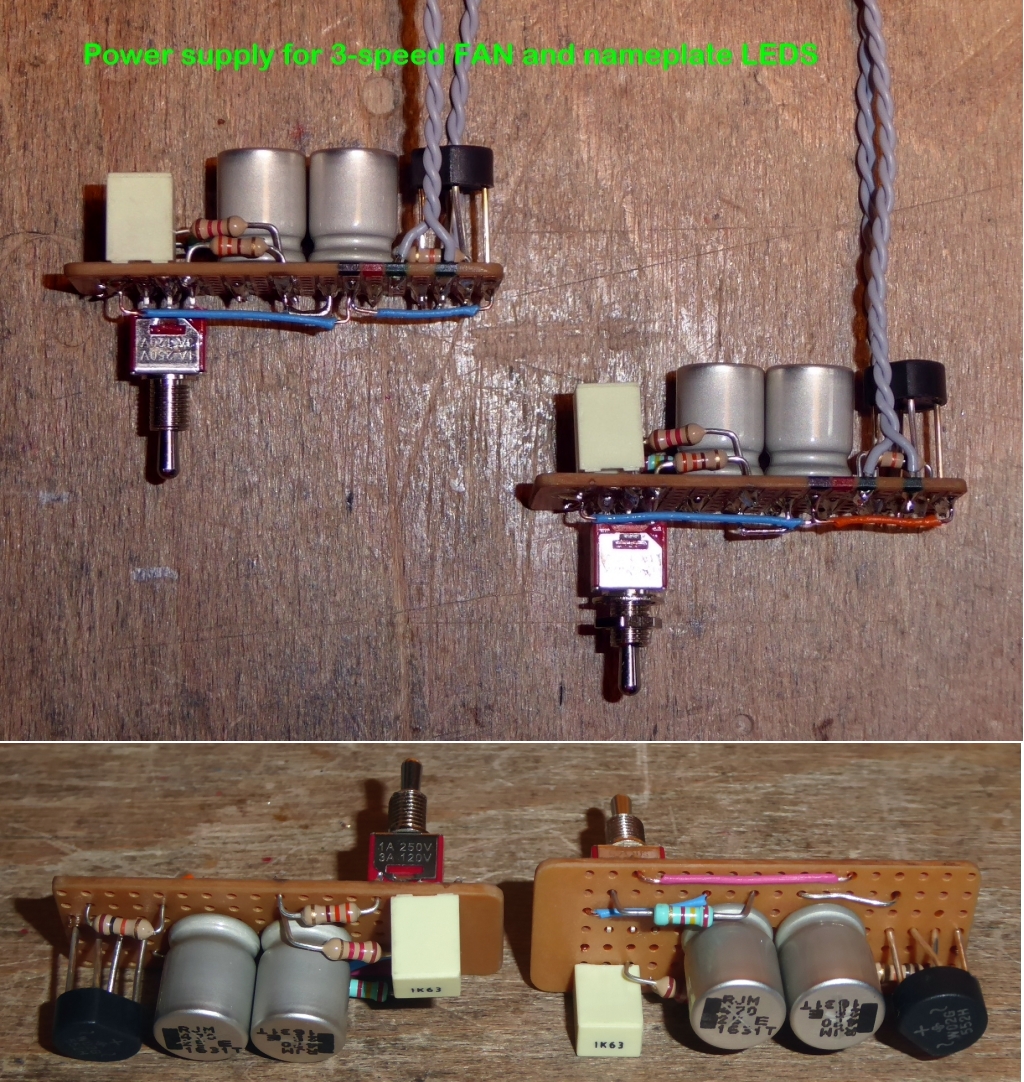
Finished wiring of the two mono-blocks :
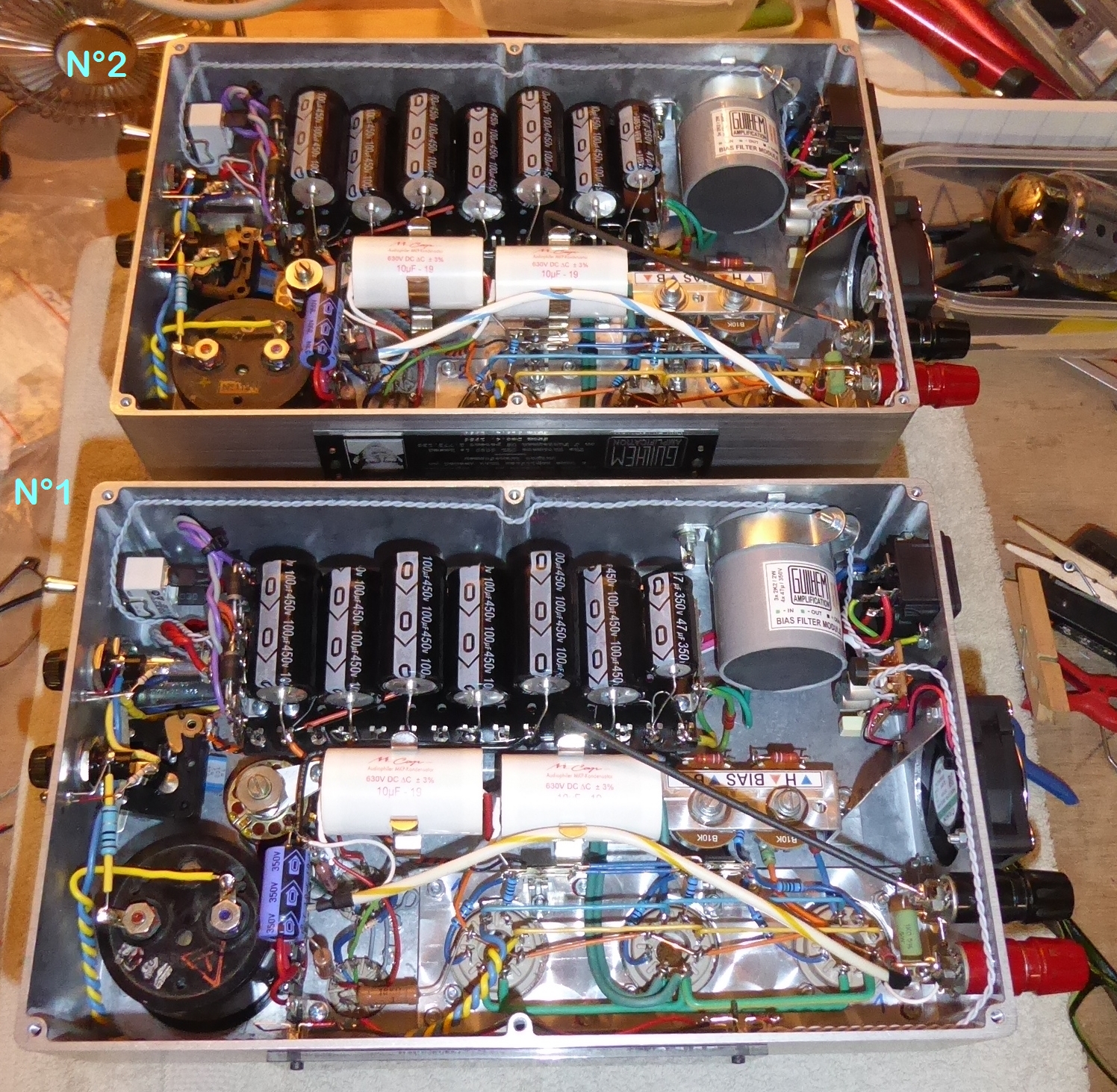
Details of the layout :
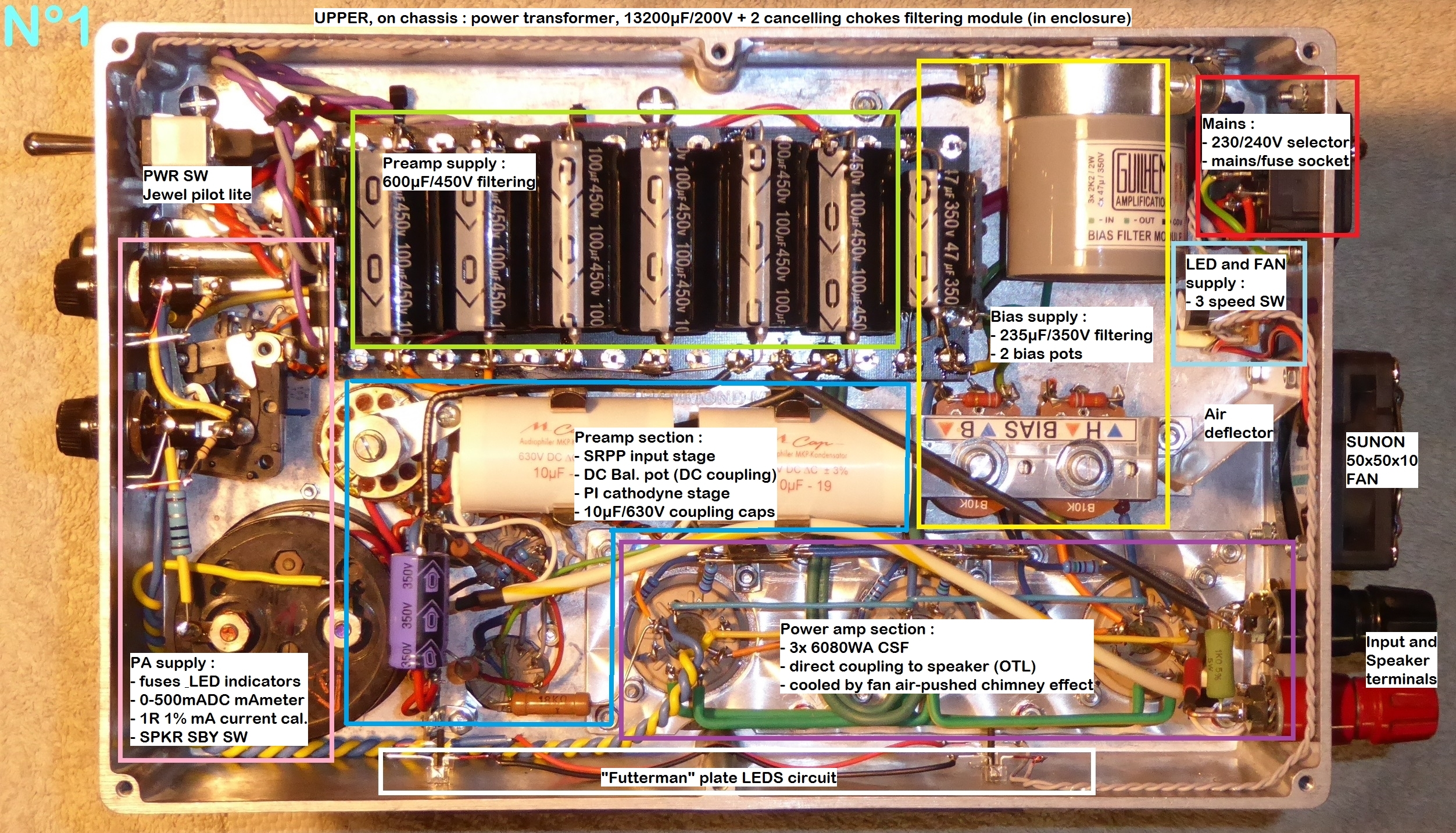
The "chimney" cooling system principle of the chassis and 6080 tubes :
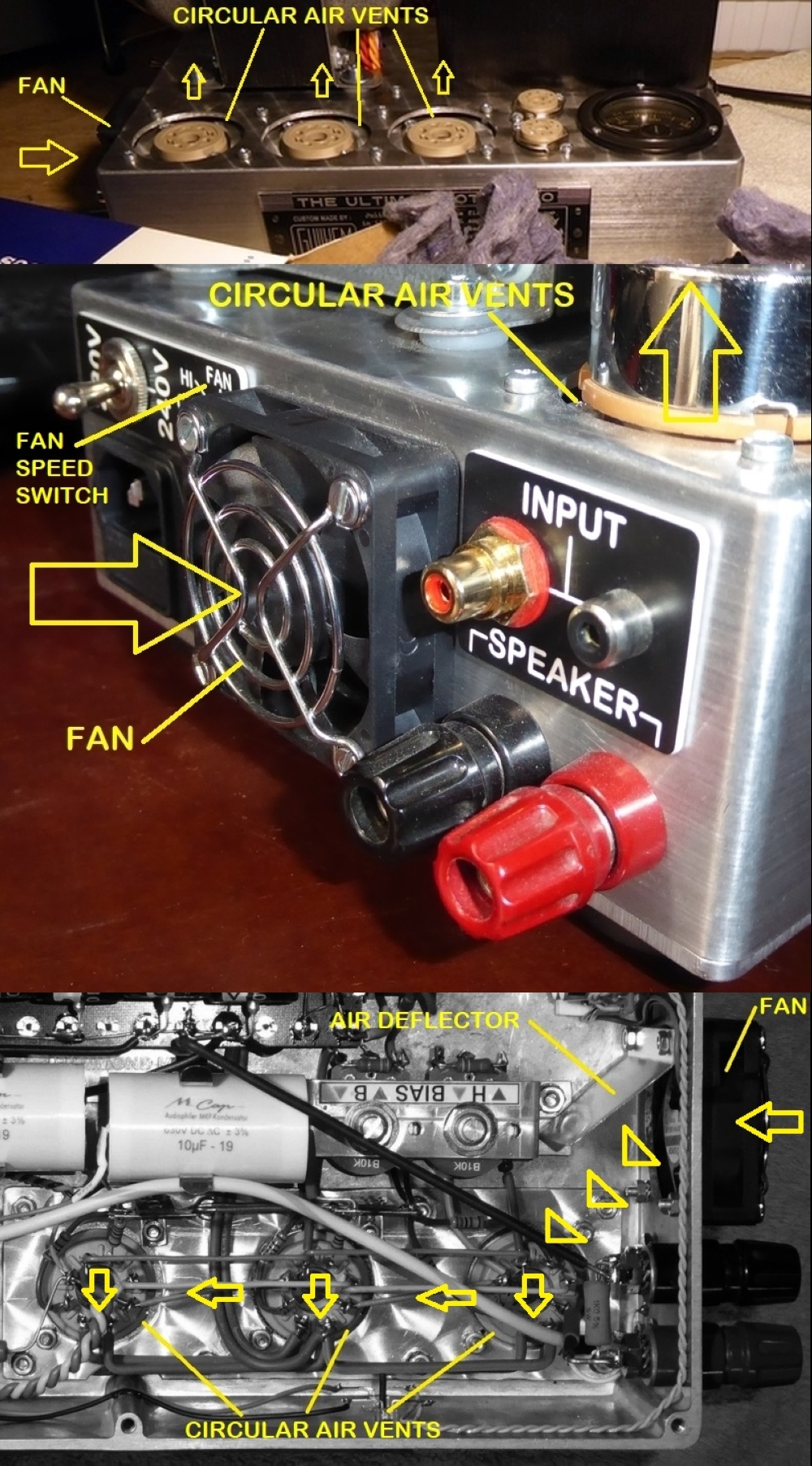
Specs :

The distortion is - by my experience - inferior to 1-2% at maximum power output :
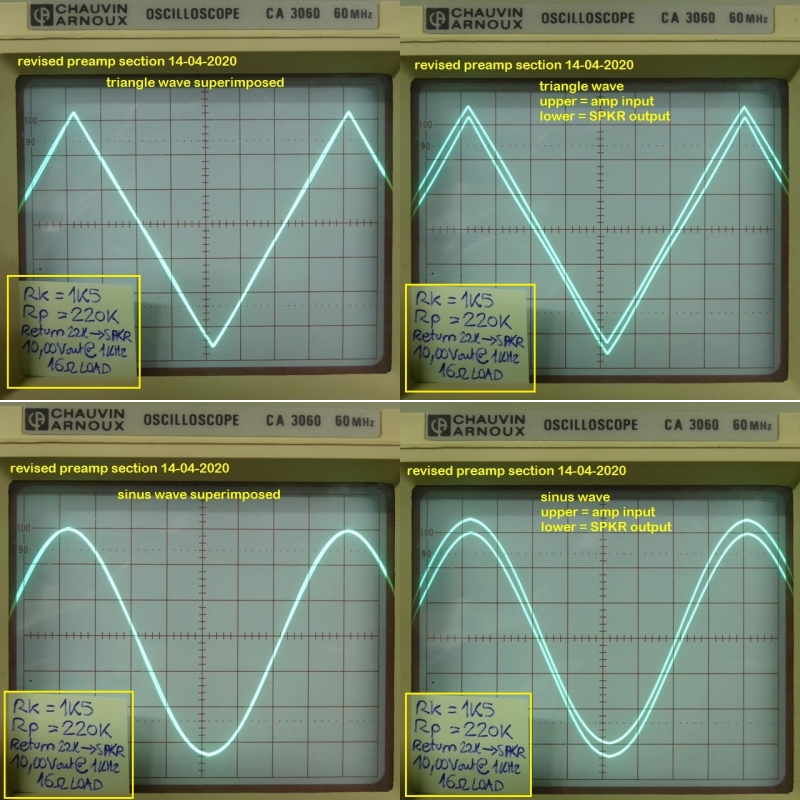
Some Square Waves shots at 10WRMS output :






The U-OTL in operation...
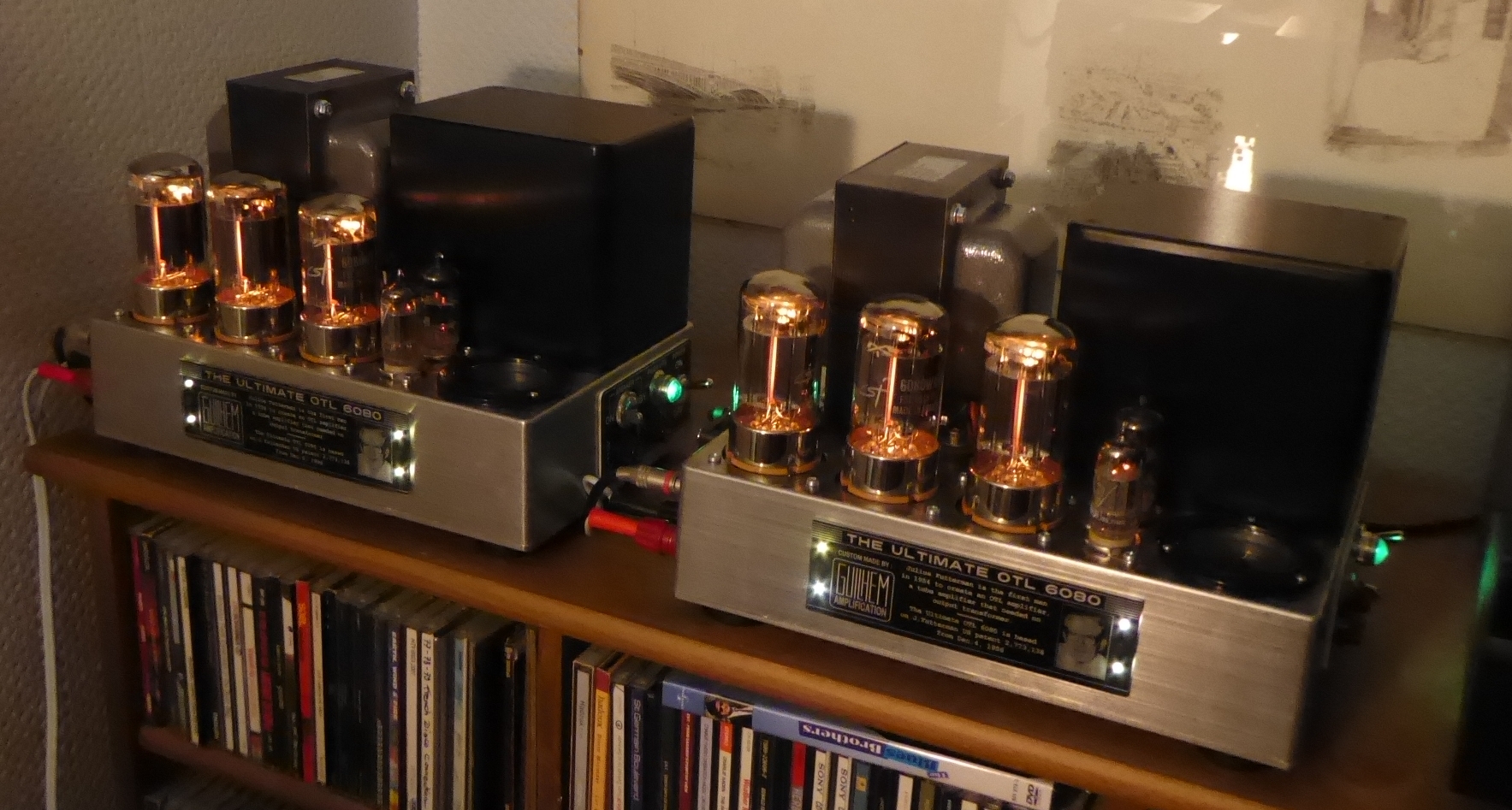
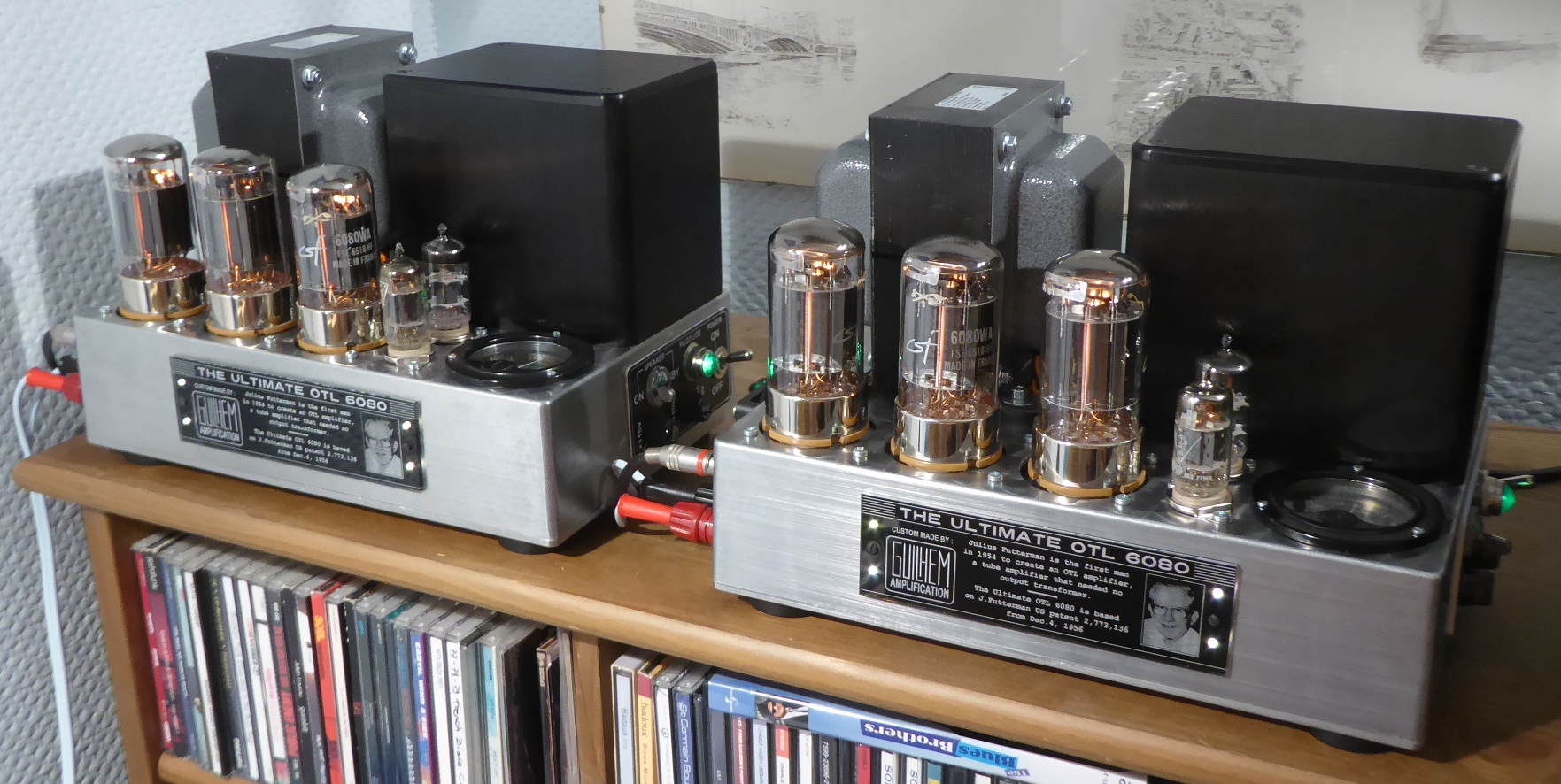
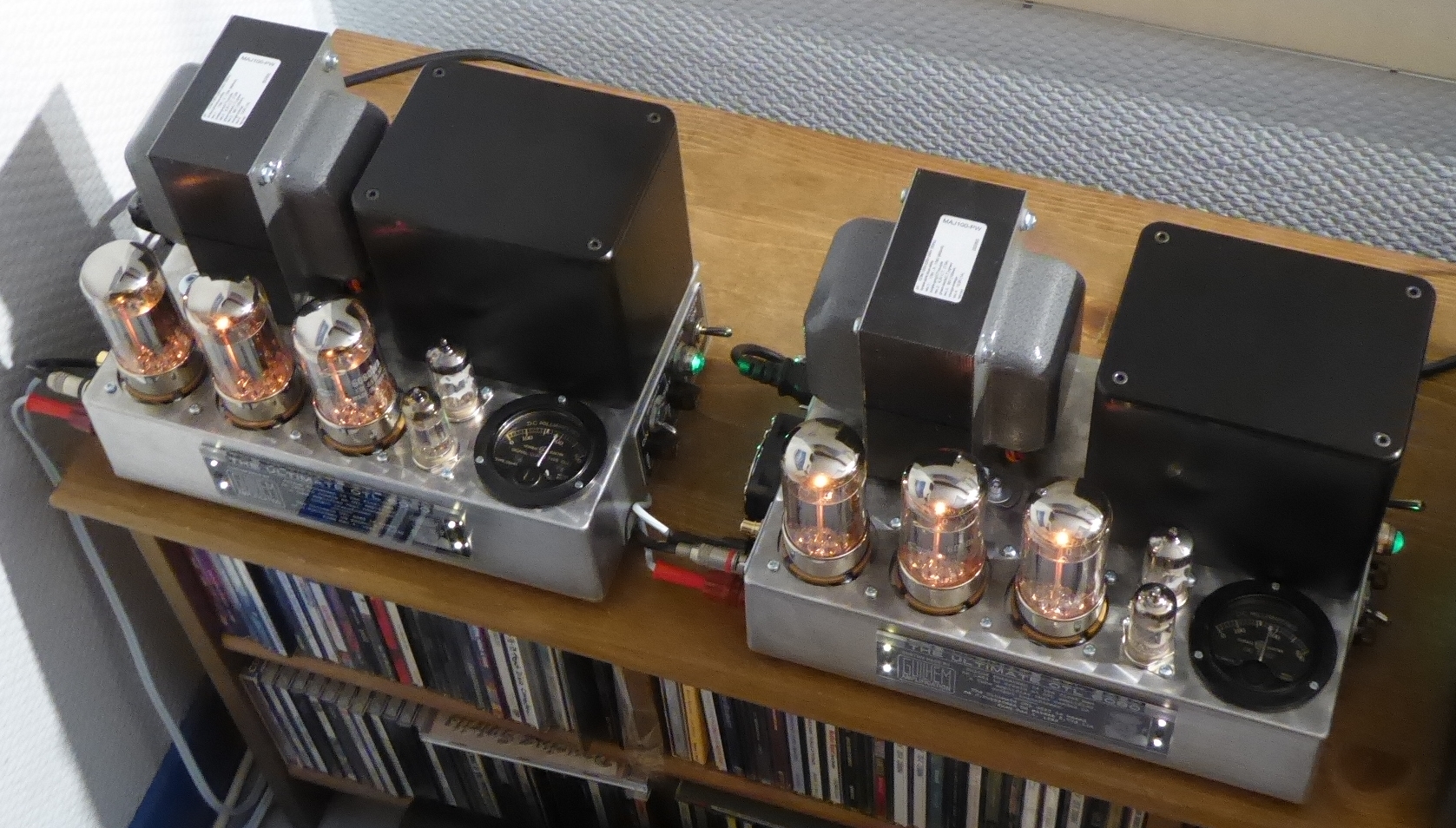
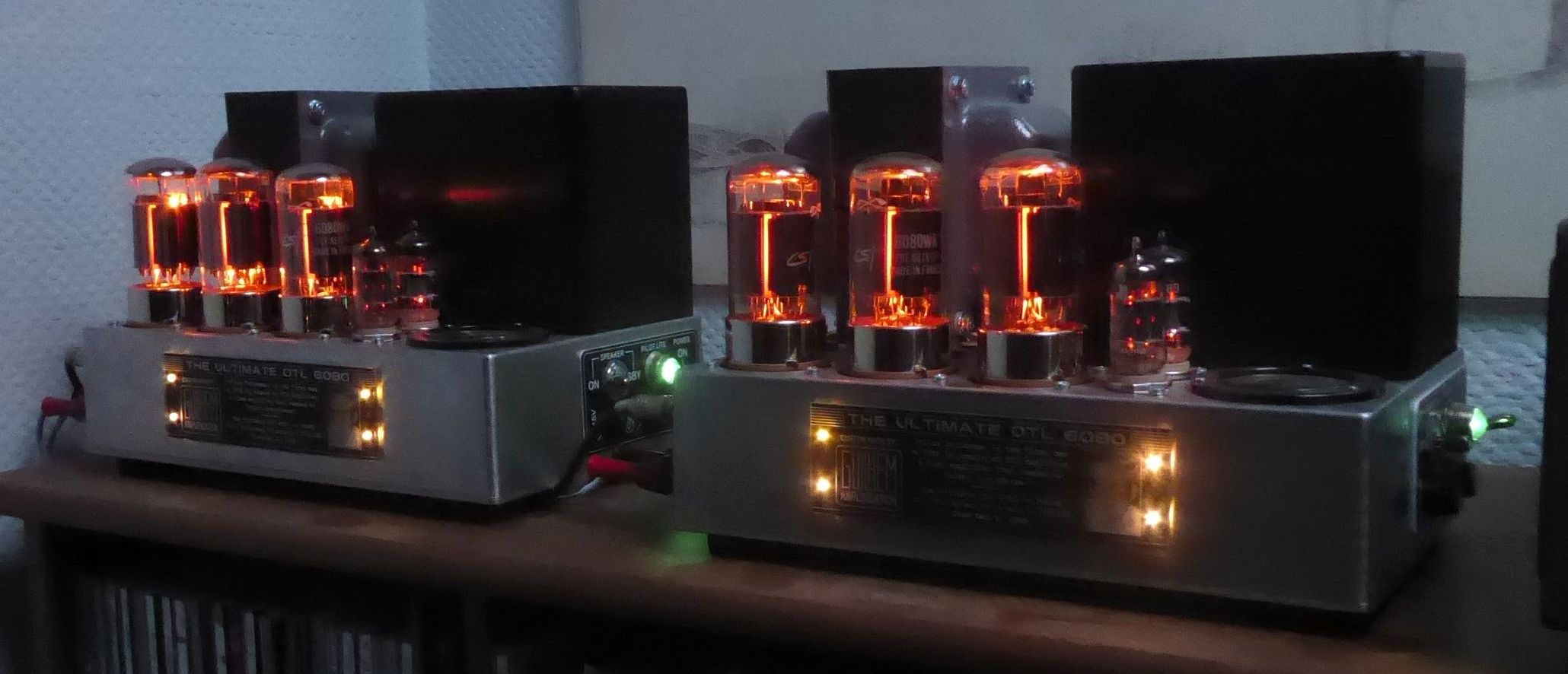
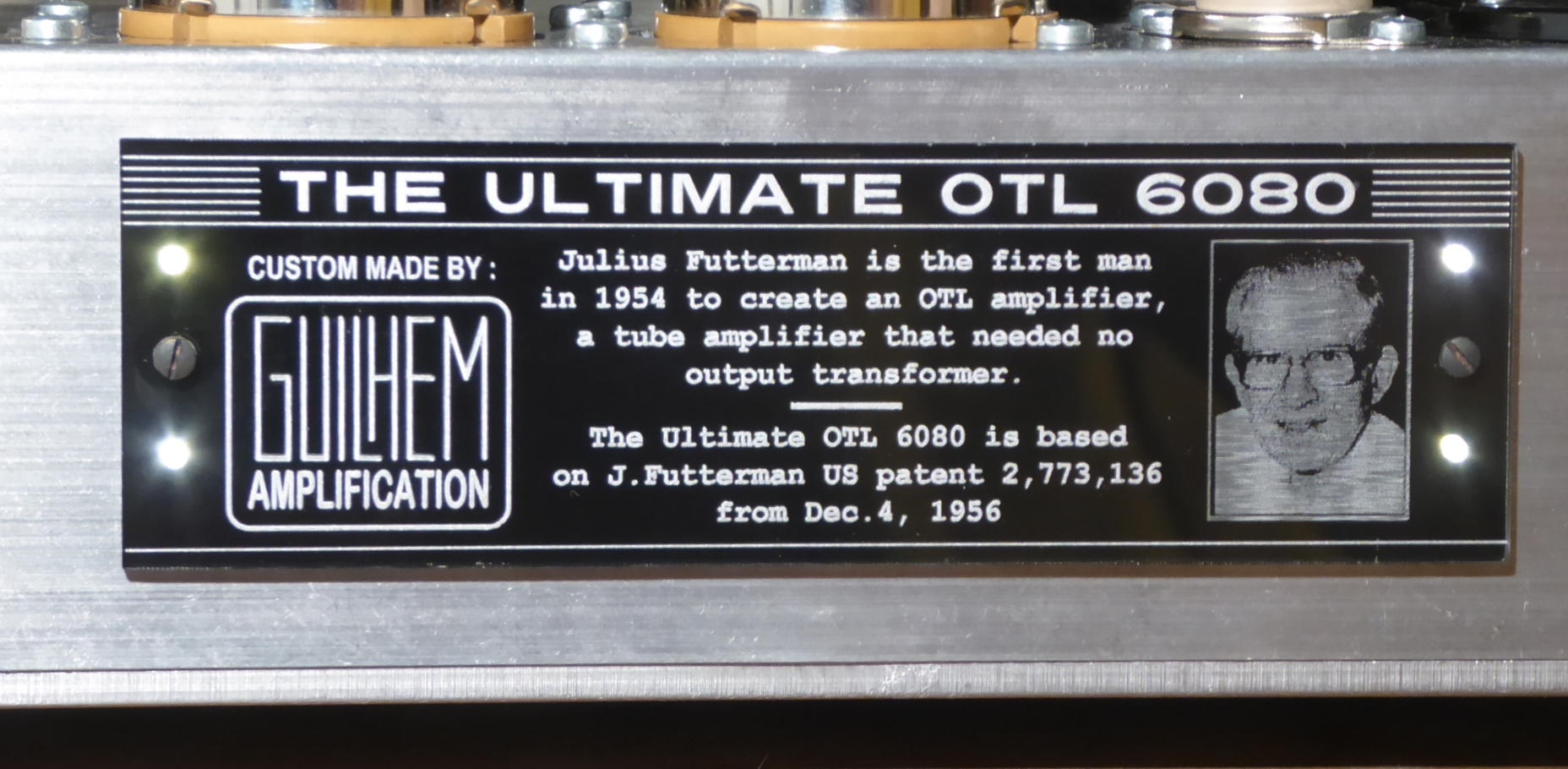
Still operational today, flawlessly... 😎
T
Sorry @Horneydude : still no mirror construction ! 😏
First, the prototype - which represents the possible final layout of the pre and power amp section :


In parallel, study of the layout :


Engine turning of the chassis top :

Tracing, drill press and the like :

Designing and engraving the plates :




Pre-assembly check :


Wiring the modules :
Power supplies :

Bias boards :

Power amp boards :

Preamp supplies :

Bias supplies :

Preamp section :

Fan and Leds supplies :

Finished wiring of the two mono-blocks :

Details of the layout :

The "chimney" cooling system principle of the chassis and 6080 tubes :

Specs :
The distortion is - by my experience - inferior to 1-2% at maximum power output :

Some Square Waves shots at 10WRMS output :
The U-OTL in operation...





Still operational today, flawlessly... 😎
T
Last edited:
Totally amazing work, a work of art, underappreciated by the masses. At first I wondered about heat build-up with such a compact circuit with many components, but you addressed it wonderfully thoughtful. You are a master of tubes 👍Still operational today, flawlessly... 😎
Totally amazing work, a work of art, underappreciated by the masses. At first I wondered about heat build-up with such a compact circuit with many components, but you addressed it wonderfully thoughtful. You are a master of tubes 👍
Thanks @Horneydude ! 🙂
Yes, you are right : the bulb temperature of a 6080WA can reach 260°C, according to the Telefunken datasheet. Below, I measure a temperature of 190°C on the top of the bulb (the hottest point) at idle, after 5mn of operation :
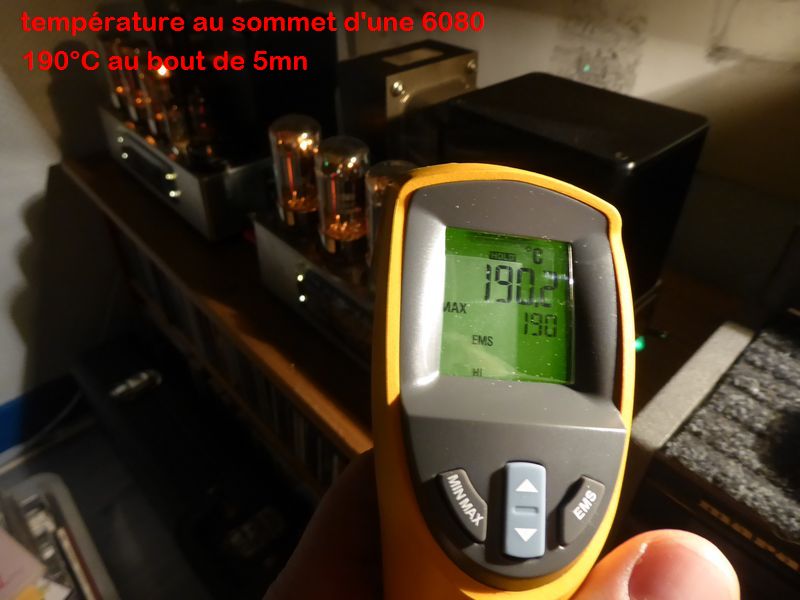
Thanks to the "chimney" fan cooling, the chassis stays cold, and the temperature of the tubes stays stable. After three hours of listening at an "everyday's loudness" level, there's absolutely no plate current drift. 😎
T
Love your work Mr tubelectron & being a builder myself I know how much thought, care & hours of work goes into the job. You get so much into such a small space, must be half Japanese. The test results look good too; how do they sound compared to a traditional valve amp?
Andy.
Andy.
Love your work Mr tubelectron & being a builder myself I know how much thought, care & hours of work goes into the job. You get so much into such a small space, must be half Japanese. The test results look good too; how do they sound compared to a traditional valve amp?
Andy.
Thanks Andy @Diabolical Artificer ! 🙂
Well, the OTL amplifiers have a sound of their own : very crisp and transparent, a lot of dynamic punch, but still fully retaining the warmth of tube amplification.
As you are an amp builder, you know like me that not all tube amps are equal... I'd say that it is the same for OTL amplifiers : the type of circuit and its design, the operating class, voltages and currents, the number of output tubes, etc... Have a strong influence on the tone of the amp itself - as well as its reliability - all this despite the absence of the output transformer.
After experimenting many circuits and have build in 1990 a first pair of OTL amps, that are still operated and owned by an Audio friend now...
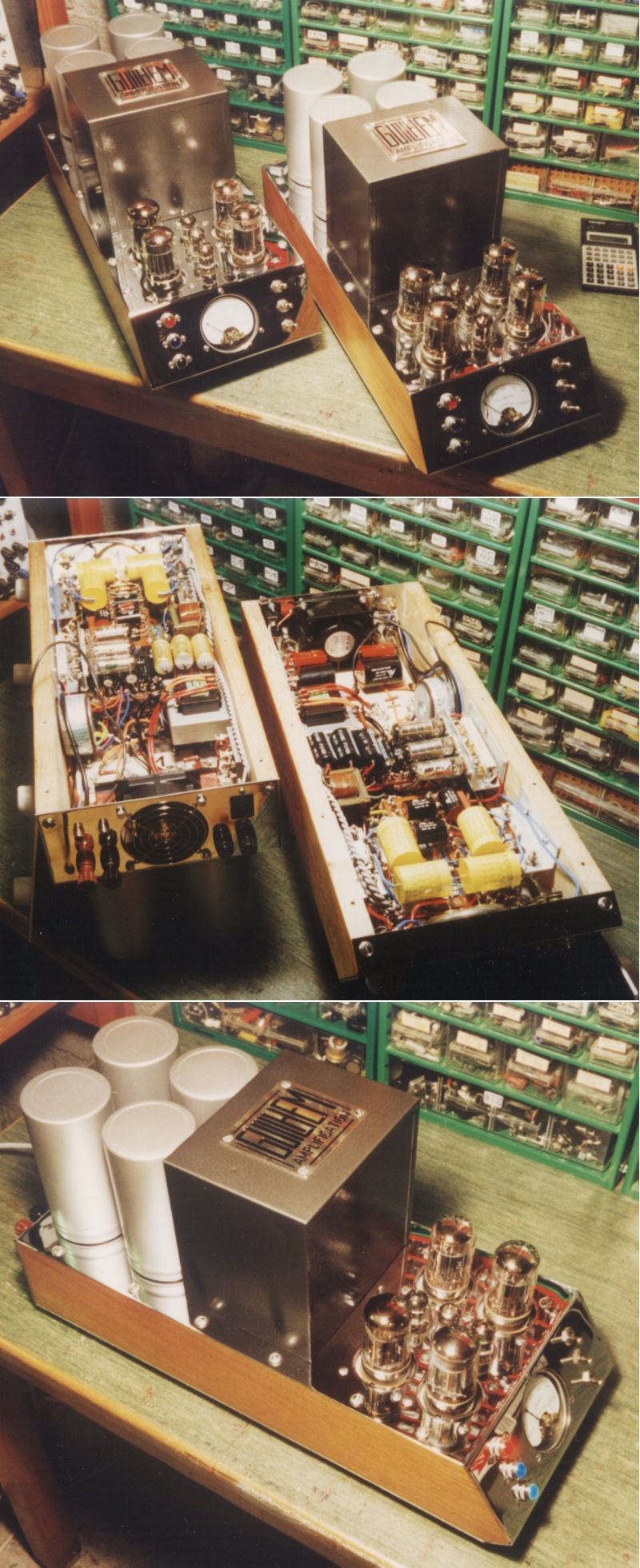
... I'd rather say that a simpler circuit, a reasonable output power, a set of tubes that are not owerpowered, is a wise decision for designing an OTL amplifier - if you expect reliability and the matching OTL tone on the long term.
The original 1953 Julius Futterman OTL circuit patent - with some modern revisits - is a perfect example, if not the best one. My U-OTL are derived from Mr Futterman original circuit, and offers 10WRMS nominal output power @16R with three 6080WA (onset of clipping at 14-15W), offering an output impedance measured at 20 Ohms...
I know that many people will disagree, but it's my take on the subject, deduced from my tests... 😉
T
- Home
- Amplifiers
- Tubes / Valves
- Photo Gallery